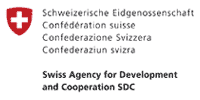Recursos Forestales
Únicamente la versión en inglés ha sido aprobada por el Comité Científico de GreenFacts.
Información sobre nuestra estructura de 3 niveles
10. Conclusions
The 2005 Global Forest Resource Assessment coordinated by the Food and Agriculture Organization of the United Nations (FAO) is the most comprehensive assessment of forests to date, in terms of content and the number of contributors. Information was collected from 229 countries and territories for three points in time: 1990, 2000 and 2005. A series of variables, related to the extent, condition, uses, and values of forests and other wooded land, were analysed. It tells us that forests cover 30% of the land area of planet Earth and range from boreal and temperate forests to arid woodlands and tropical moist forests; from undisturbed primary forests to forests managed and used for a variety of purposes.
The assessment also tells us that deforestation continues at an alarmingly high rate, but that the net loss of forest area is slowing down thanks to forest planting, landscape restoration, and natural expansion of forests on abandoned land. Forests are increasingly being conserved and managed for multiple uses and values, and play a crucial role in climate change mitigation as well as in the conservation of biodiversity and of soil and water resources. If managed sustainably, forests also contribute significantly to local and national economies and to the well-being of current and future generations.
Overall, progress towards sustainable forest management has been mixed. Using the thematic elements of sustainable management as an assessment framework has helped broaden the perspective and the result is a much richer review of key trends in forest resources, their functions and benefits.
At the global level, the world’s forest resources appear to be doing relatively fine: changes in most variables are fairly small and the larger changes indicate more positive than negative trends. However, at regional and subregional level, this picture changes dramatically revealing considerable differences, with alarming trends in several tropical subregions.
Alarming trends include:
- Deforestation continues at an alarming rate in several regions and countries and shows no sign of slowing down at the global level.
- The area of primary forest is decreasing by about 60 000 km2 each year; partly due to deforestation and partly to other human activities affecting the structure of these forests.
- In some regions, the area of forest adversely affected by forest fires, insects, and diseases is increasing.
- When taking the inflation into account, the value of wood removals has been decreasing over the past 15 years. Wood removals being one of the main sources of income for the forest owner, this may have negative impacts on future investments in forest conservation and management.
- The level of employment in forest management and conservation is decreasing in some regions and at the global level.
Although not all of the above trends are universally seen as negative — for example a decrease in the value of wood removals may indicate that functions other than wood production are given priority — considerable efforts will be needed in order to progress towards sustainable forest management in all countries and regions. However, it is also clear that there are many positive developments regarding forest resources, their management and uses.
As clearly illustrated in previous sections, the assessment of progress towards sustainable forest management depends on the context, the scale and the perspective applied. More...



